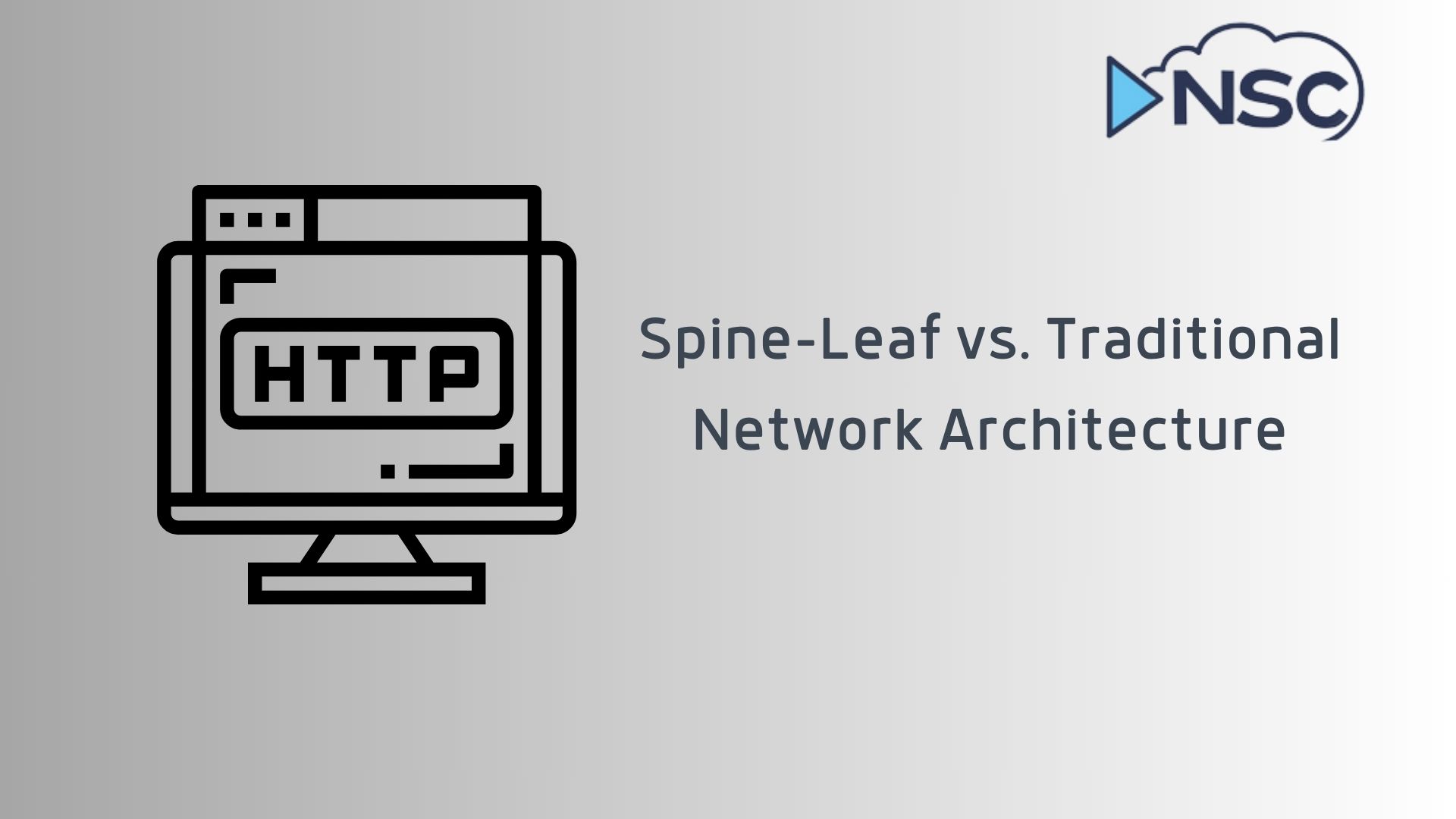In the fast-paced world of network infrastructure, choosing the appropriate network architecture is crucial for addressing the increasing complexity and volume of data traffic.
Traditional Network Architecture and Spine-Leaf Architecture stand out as two principal frameworks. Each offers unique advantages and caters to different operational demands.
This blog will provide a thorough comparison of these architectures, discussing their core principles, advantages, limitations, and ideal usage scenarios. The aim is to equip decision-makers with the knowledge to optimize their network configurations for enhanced performance and future growth.
Understanding Traditional Network Architecture
Traditional Network Architecture is structured in a three-tier model: the core layer, aggregation layer, and access layer. The core layer handles the overall transport of messages across the network, the aggregation layer provides redundancy and manages data flow from access switches to the core layer, and the access layer allows end devices to connect to the network. This structure is designed primarily for north-south traffic, which is the data traffic moving from client to server.
Limitations
One of the main challenges with the traditional architecture is the handling of east-west traffic—the data moving laterally across the network between servers or storage units within a data center.
In environments with high volumes of east-west traffic, the traditional model can lead to significant bandwidth bottlenecks. Devices connected to the same switch compete for bandwidth, which can result in poor response times and inefficiency, particularly in large-scale data centers where server and storage systems are not co-located.
Introduction to Spine-Leaf Architecture
Spine-Leaf Architecture simplifies the traditional model into a dynamic two-layer system consisting of spine and leaf switches. Each leaf switch connects to every spine switch, forming a matrix that allows for direct paths between any two points in the network.
This structure is particularly effective in handling east-west traffic, which is critical in modern data centers where communication between servers is frequent.
Key Benefits
The spine-leaf model offers significant improvements in terms of latency and bandwidth management. By eliminating many of the traditional bottlenecks associated with hierarchical models, it provides a more predictable network performance.
The architecture is inherently scalable; adding more capacity is as simple as adding additional spine or leaf switches. Furthermore, it eliminates the need for the Spanning Tree Protocol, which helps in avoiding network loops and thus enhances the overall efficiency and data throughput.

Comparative Analysis
Performance and Scalability
When comparing Traditional and Spine-Leaf Architectures, the latter excels in environments with high east-west traffic, common in modern data centers.
Spine-Leaf optimizes data paths between servers, reducing latency and increasing bandwidth availability. Traditional architectures struggle under similar conditions due to inherent bottlenecks in their hierarchical design.
Cost and Maintenance
Spine-Leaf Architecture often results in higher initial costs due to the need for more switches. However, the maintenance and operational costs can be lower in the long run, thanks to standardized components and simpler management.
Traditional systems might have lower initial costs but can become cumbersome and costly to scale and maintain as network demands grow.
Suitable Applications
The Spine-Leaf Architecture is particularly well-suited for data centers that handle substantial east-west traffic such as those involving high volumes of server-to-server communications.
It is ideal for modern applications distributed across multiple servers or virtual environments, like those found in cloud computing and big data analytics.
On the other hand, Traditional Network Architecture may be more appropriate for smaller networks or enterprises where north-south traffic dominates, and the network topology does not frequently change.
Summary
In summary, the choice between Traditional Network Architecture and Spine-Leaf Architecture depends on the specific needs and traffic patterns of a data center.
Spine-Leaf offers superior performance and scalability for environments dominated by east-west traffic, making it ideal for modern, high-demand applications.
Traditional architecture, while potentially more cost-effective initially, faces limitations in scalability and performance under heavy server-to-server traffic conditions. Decision-makers should consider these factors to optimize their network for current and future needs.


